Dell S2719DM 27" QHD HDR Monitor Review: Style Meets Performance
Why you can trust Tom's Hardware
Grayscale, Gamma & Color
Grayscale Tracking
Only the S2719DM’s Custom Color mode allows access to the RGB sliders. All other modes are fixed. Standard is quite good out of the box and hits the International Commission on Illumination's D65 standard illuminant almost perfectly. Most users will be satisfied with this, but we calibrated anyway to see if there were any gains to be had.
Our grayscale and gamma tests are described in detail here.
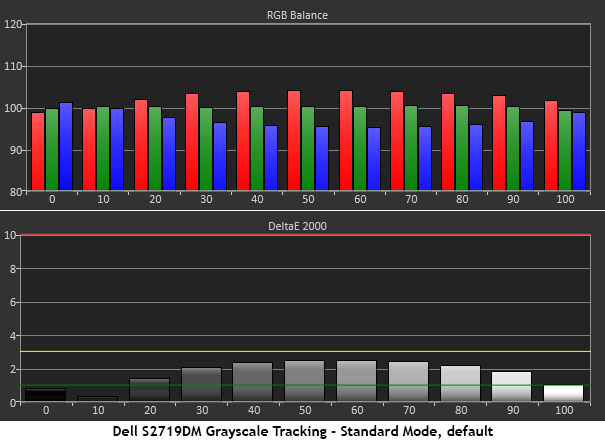
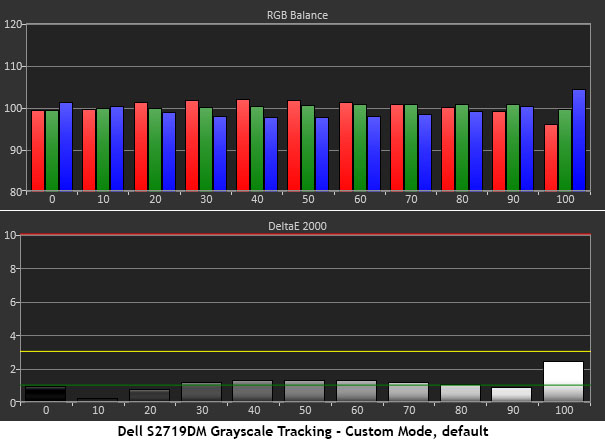
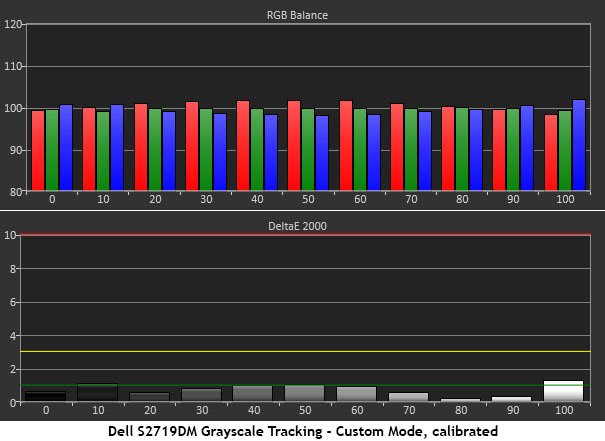
The Standard mode runs a tiny bit warm, but the error is comfortably below 3dE average. There is no need for adjustment, impressive considering the S2719DM does not include a factory-certified calibration.
Still, you can enjoy slightly better performance in Custom mode before adjustment, but the difference is not visible to the eyes. We reduced red and green one click each and generated a pro-level chart. The only compromise happens at 100% brightness, where we saw a bit of clipping. Lowering the contrast slider cures that but costs a bit of dynamic range.
Comparisons
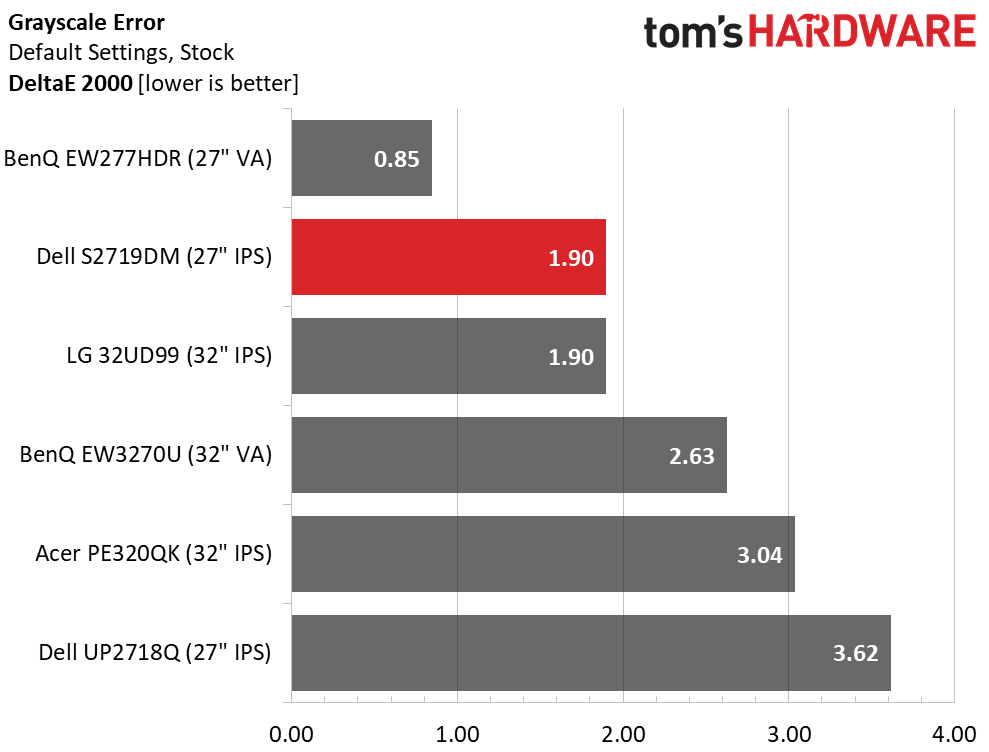
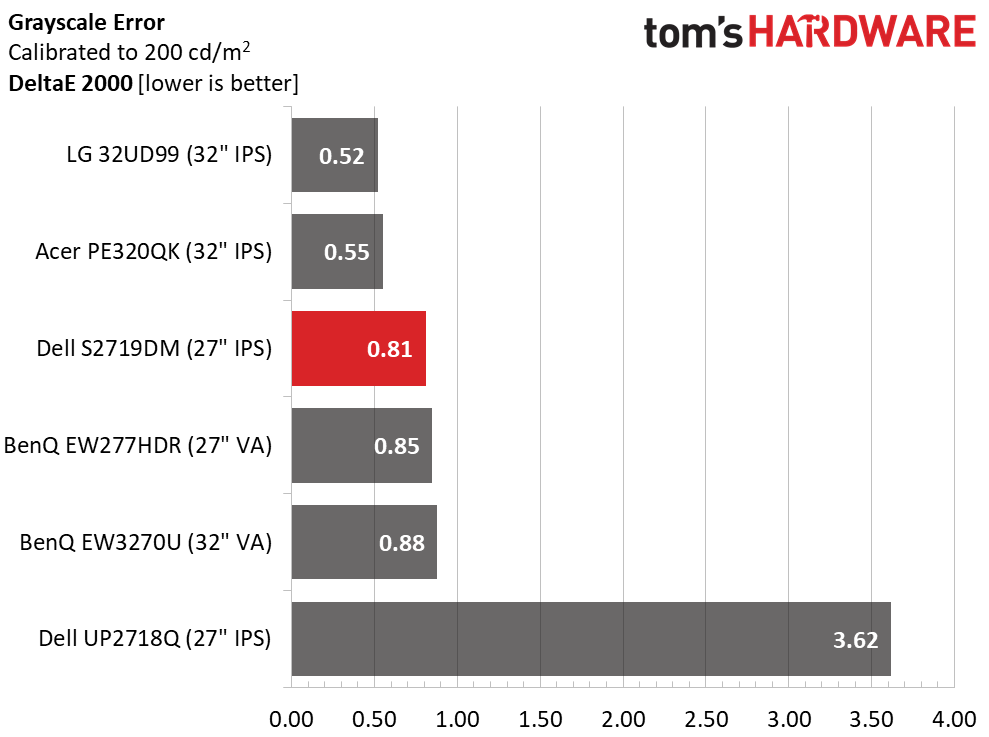
1.9dE is an excellent out-of-box result. The image looks superb with all default settings in place.
Calibration is only a matter of ego, not necessity. Minor adjustments bring the monitor to an extremely high level of accuracy.
Gamma Response
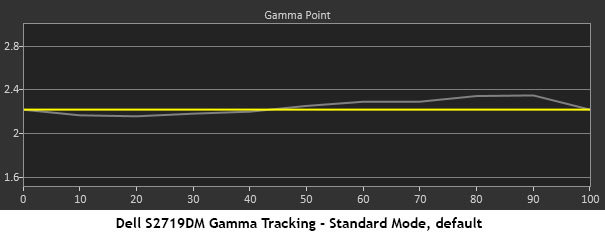
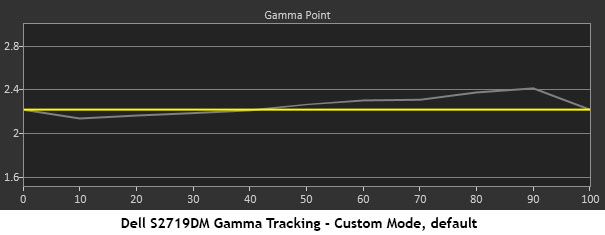
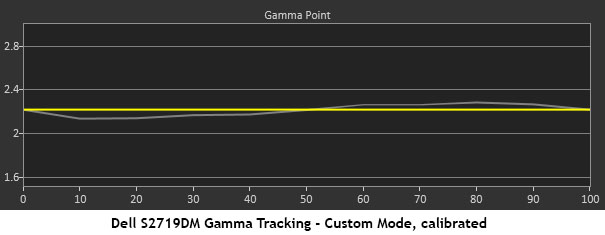
Gamma tracking is close to perfect in all modes. Standard and Custom (uncalibrated) show a slight hump from 60-90% brightness. Luminance should be a bit higher in this range, but you'll be hard-pressed to notice an issue. And calibration reduces that error to almost nothing.
Get Tom's Hardware's best news and in-depth reviews, straight to your inbox.
Comparisons
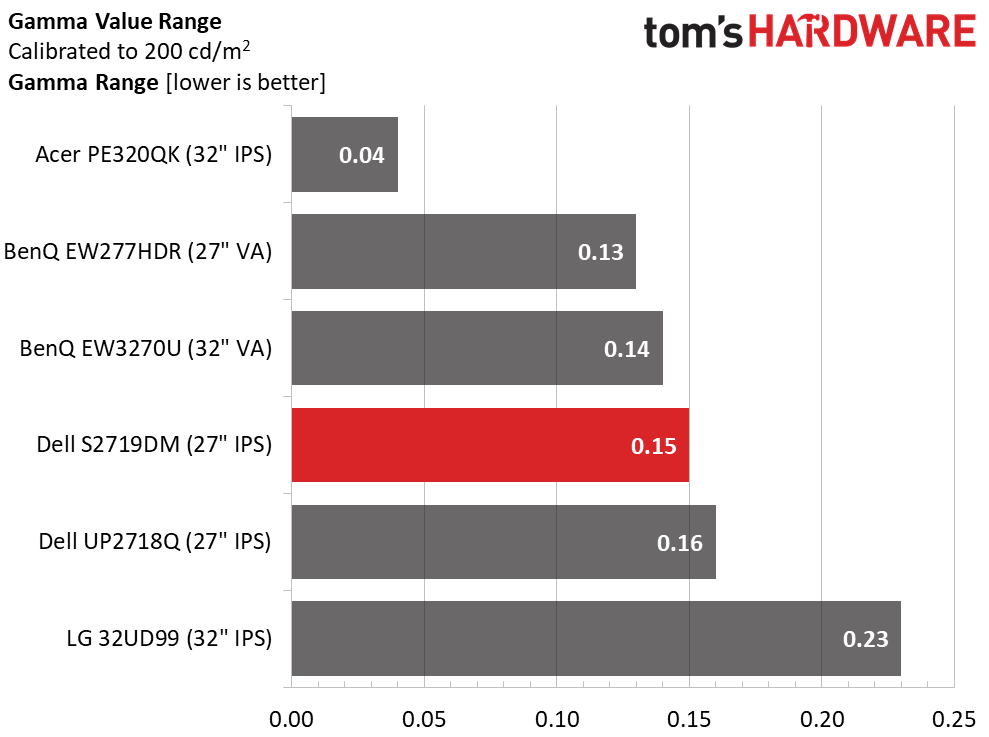
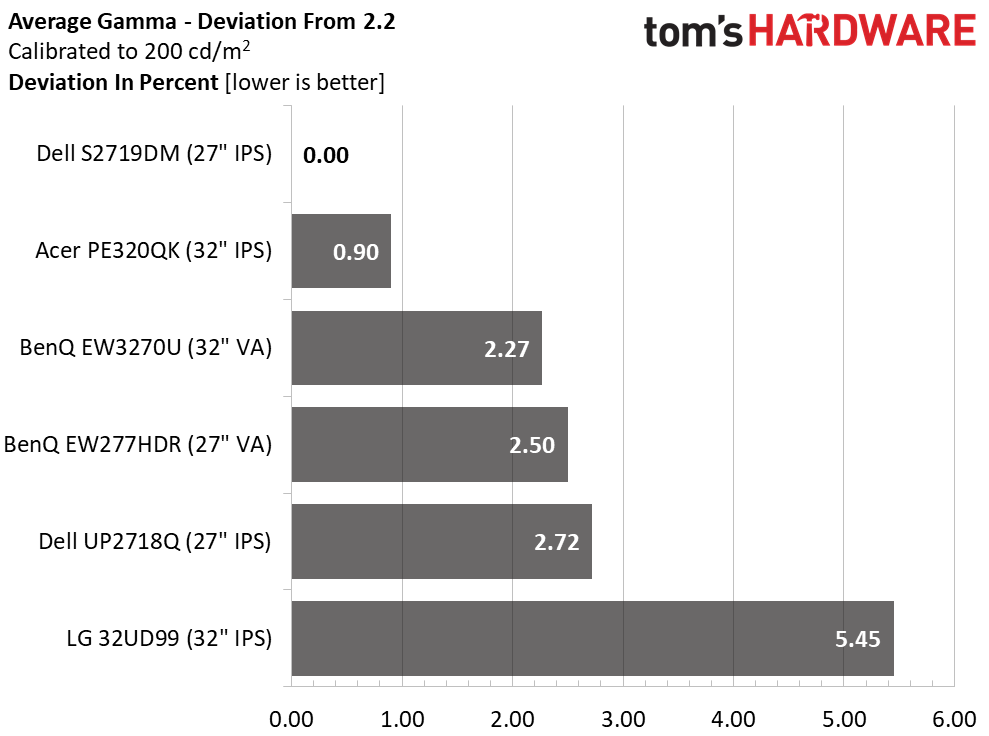
All the monitors tested exhibit tight gamma tracking, but the S2719DM is one of the very few that hits a 2.2 average on the nose. It can’t get better than that.
Color Gamut & Luminance
We’ve dubbed the S2719DM an sRGB+ monitor because it is capable of a little extra saturation in HDR mode. For SDR signals, it tracks sRGB closely with just a tiny bit of bonus red and green, along with a little extra blue.
For details on our color gamut testing and volume calculations, click here.
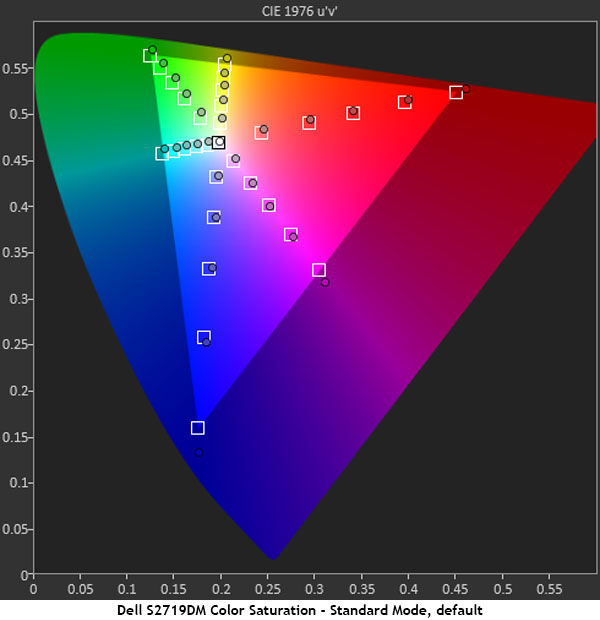
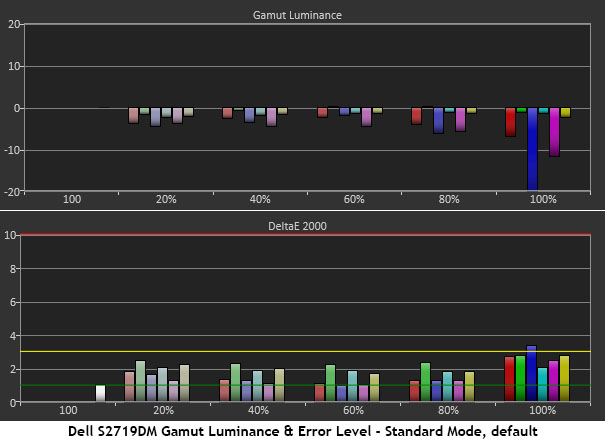
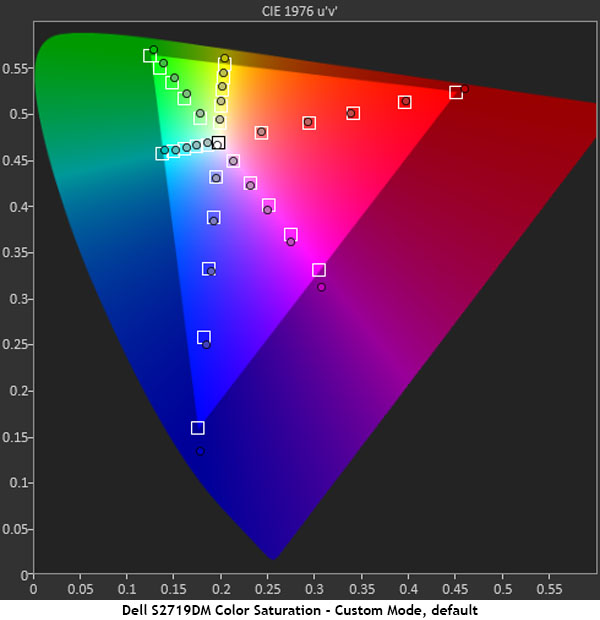
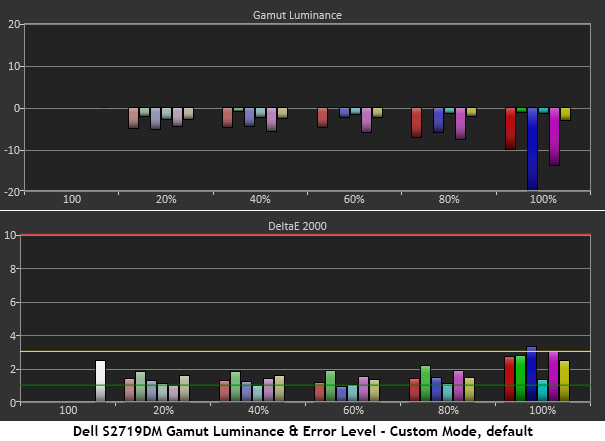
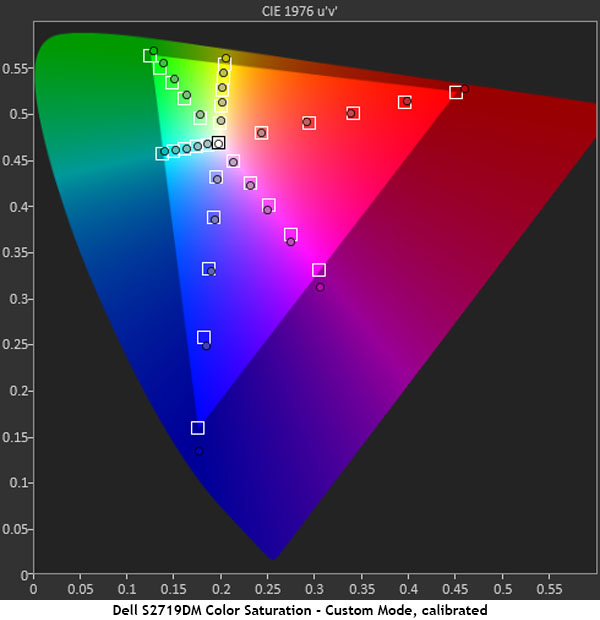
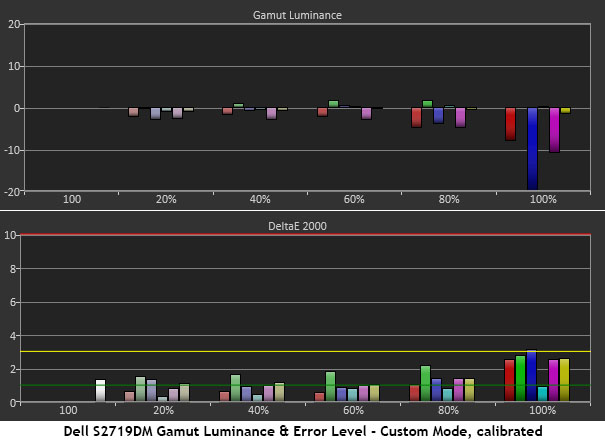
While this monitor is not factory-certified for color accuracy, it performs well enough to be so.
With such accurate gamma and grayscale, the S2719DM is poised to do well in gamut saturation and luminance. All color points are on-target except for the 100% levels of blue and magenta, which are oversaturated. You can fix this by lowering the luminance levels, which brings the error under 3dE.
Comparisons
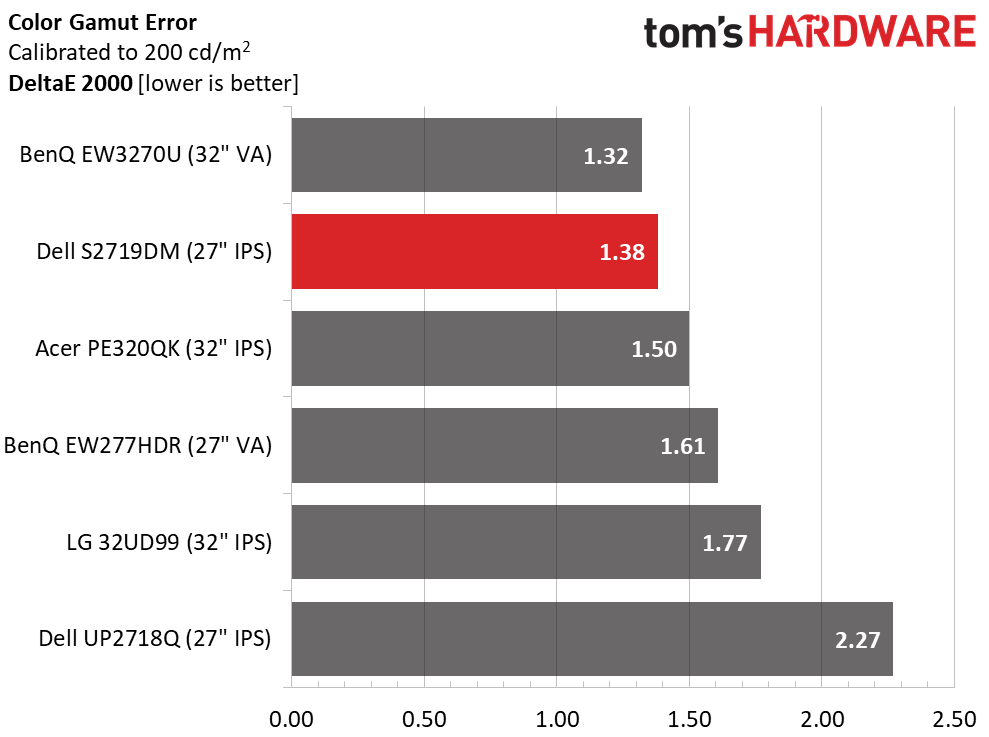
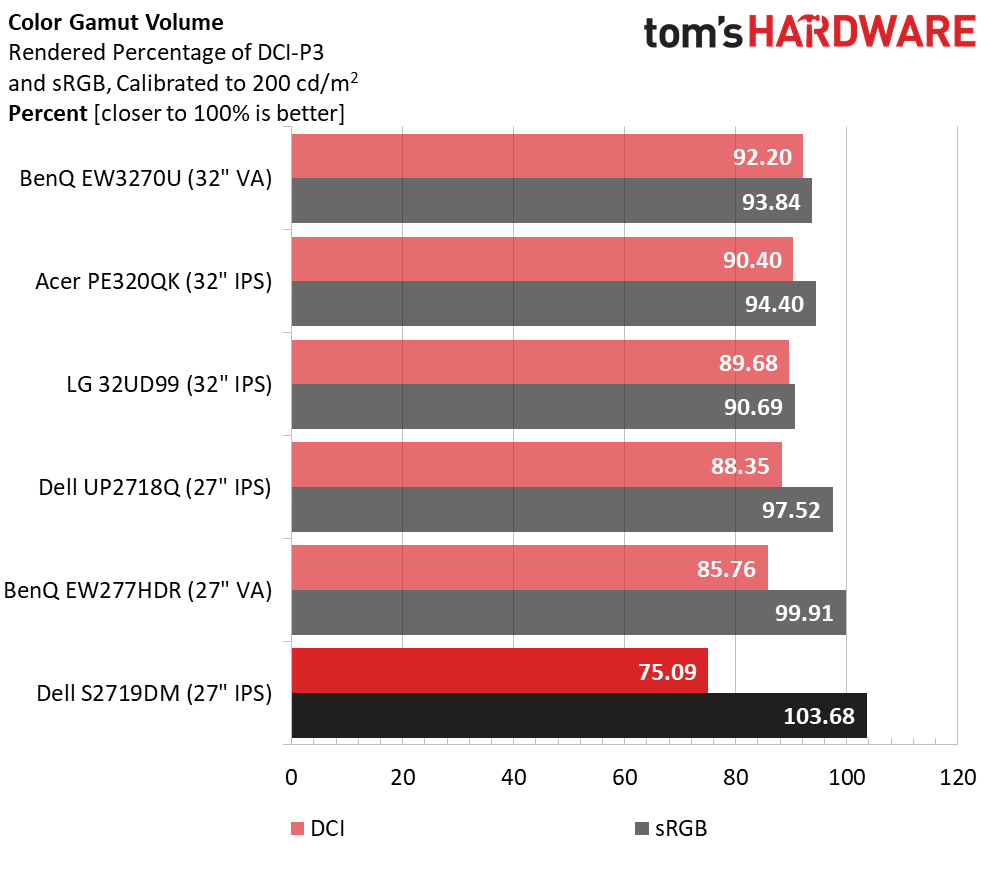
Our calibration efforts yield only small gains in color gamut accuracy and are certainly not necessary.
In the color gamut volume test, we used DCI-P3 as our benchmark. We measured in HDR mode to ensure we were recording the largest numbers possible. The S2719DM doesn’t get quite as high as the others. That’s why we say the monitor is “sRGB+.” It is correct to call it extended color, but it isn’t in the 90% range like other screens. The extra saturation in SDR mode comes from all three primaries, principally blue where you get a little bonus.
For color-critical work, we recommend a custom profile to ensure maximum accuracy for photo editing.
MORE: Best Gaming Monitors
MORE: How We Test Monitors
MORE: All Monitor Content
Current page: Grayscale, Gamma & Color
Prev Page Brightness & Contrast Next Page HDR Grayscale, EOTF, & Color
Christian Eberle is a Contributing Editor for Tom's Hardware US. He's a veteran reviewer of A/V equipment, specializing in monitors. Christian began his obsession with tech when he built his first PC in 1991, a 286 running DOS 3.0 at a blazing 12MHz. In 2006, he undertook training from the Imaging Science Foundation in video calibration and testing and thus started a passion for precise imaging that persists to this day. He is also a professional musician with a degree from the New England Conservatory as a classical bassoonist which he used to good effect as a performer with the West Point Army Band from 1987 to 2013. He enjoys watching movies and listening to high-end audio in his custom-built home theater and can be seen riding trails near his home on a race-ready ICE VTX recumbent trike. Christian enjoys the endless summer in Florida where he lives with his wife and Chihuahua and plays with orchestras around the state.
-
Rdslw DELL >> anything, AT least in monitors. solid, bright, and just works no matter what and how you connect it. Easily best monitors I had.Reply -
AlistairAB I guess I just got unlucky. I ordered it right when it came out, clearly the best looking picture I've seen from a 1440p screen. But my black uniformity was awful with bleed everywhere. I ultimately bought the new Samsung 32" 4k monitor for $400 and am much happier.Reply
Nice to see though that Tom's got one with fantastic black uniformity, maybe I should have just ordered a second one..... -
AlistairAB The monitor is really beautiful and thin. Excellent build quality, much surpassing last year's thin design.Reply -
truerock I'm not sure I understand that 60Hz is a "Con"Reply
You can't get 120Hz in a 4k UHD monitor. That would require HDMI 2.1 which is not something you can buy for a Windows 10 PC at this time.
Am I missing something?
Is Tom's saying >>all<< 4k UHD monitors have a con of a maximum 60Hz? -
truerock OK... I'm reding the article again. It's just stupid. The subject is 4k UHD monitors. The reviewer is mentally confused and trying to compare 4k UHD monitors to other monitor form factors.Reply
The author needs to write a different article about the state of 4k UHD monitors in general compared to typical 1080p monitors or something like that. -
10tacle Reply21130801 said:I'm not sure I understand that 60Hz is a "Con"
You can't get 120Hz in a 4k UHD monitor. That would require HDMI 2.1 which is not something you can buy for a Windows 10 PC at this time.
Am I missing something?
Is Tom's saying >>all<< 4k UHD monitors have a con of a maximum 60Hz?
I had the exact same thought. The price point of this monitor and its features are extremely competitive if not class setting. You have to spend over $400 (USD) to get a faster 1440p 27" monitor, and that's not even including one for Freesync or G-Sync. Further, I am one who doesn't see the major performance improvement past a consistent 60Hz/60FPS gameplay experience or a 120Hz/120FPS experience.
This is why I've always overkilled on GPU power. I want to make sure the minimum frames in games don't dip down to near or below the 60FPS/60Hz sync limit. Also, the GPU doesn't have to work as hard. I've tried a G-sync 144Hz monitor and just didn't appreciate the cost difference vs. performance. I guess my eyes are getting older.
Anyway I've been very happy with my Dell U2713HM 1440p that is now five years old. It cost over $500 but for the time was top of the line. In fact I have four Dell monitors I've never had problems with any of them dating back to a 2000-built 19" Trinitron G420S CRT built by Sony. If my 1440p monitor dies, I'd snap one of these up in a heartbeat.
Also, I hope one day we can all have some sort of HDR standard because the different formats of it are not the same kind of tech and really not directly comparable:
HDR10 Dolby Vision
HLG
Advanced HDR
Off topic: I see my Dell G420S CRT monitor is selling on eBay for $450 plus! A photographer pro friend tells me that these old CRTs are still in high demand for their color reproduction. I think I just found my ticket to my next hardware upgrade. -
JamesSneed Reply21130801 said:I'm not sure I understand that 60Hz is a "Con"
You can't get 120Hz in a 4k UHD monitor. That would require HDMI 2.1 which is not something you can buy for a Windows 10 PC at this time.
Am I missing something?
Is Tom's saying >>all<< 4k UHD monitors have a con of a maximum 60Hz?
If only this was a 4k monitor you may have had a point. -
JamesSneed Reply21130815 said:OK... I'm reding the article again. It's just stupid. The subject is 4k UHD monitors. The reviewer is mentally confused and trying to compare 4k UHD monitors to other monitor form factors.
The author needs to write a different article about the state of 4k UHD monitors in general compared to typical 1080p monitors or something like that.
It's a QHD i.e 2K monitor. I don't think the author is the one confused. :pt1cable: -
JamesSneed I think the cons should list the lack of VESA, not a conn for everyone but then neither is 60 Hz. Personally on the spec chart I think VESA mountable should be there and if it was show the VESA mount size like 100x100 etc.Reply -
truerock Reply21132577 said:21130815 said:OK... I'm reding the article again. It's just stupid. The subject is 4k UHD monitors. The reviewer is mentally confused and trying to compare 4k UHD monitors to other monitor form factors.
The author needs to write a different article about the state of 4k UHD monitors in general compared to typical 1080p monitors or something like that.
It's a QHD i.e 2K monitor. I don't think the author is the one confused. :pt1cable:
Wow... do I feel stupid. I've been so focused on upgrading to 4k UHD that I forgot what QHD was.
In my limited brain space there is only 1920x1080p and 3840x2160 UHD. Everything else is just noise that I ignore. If I had noticed the article was about a QHD monitor I wouldn't have even read it.
Thanks for pointing out my stupidity. I was really confused about 60Hz being a "Con".